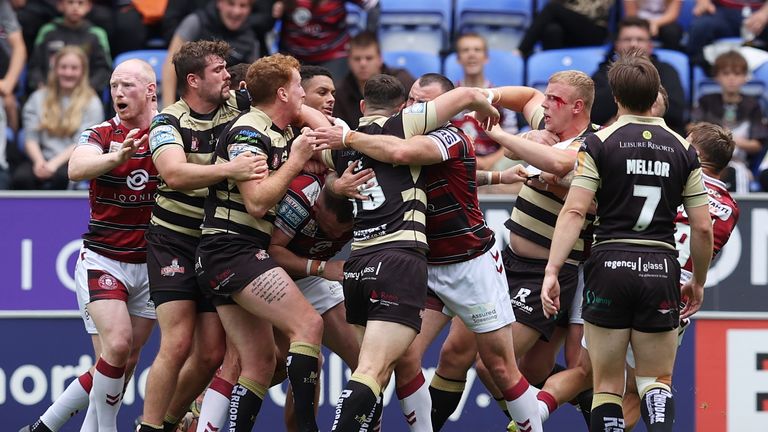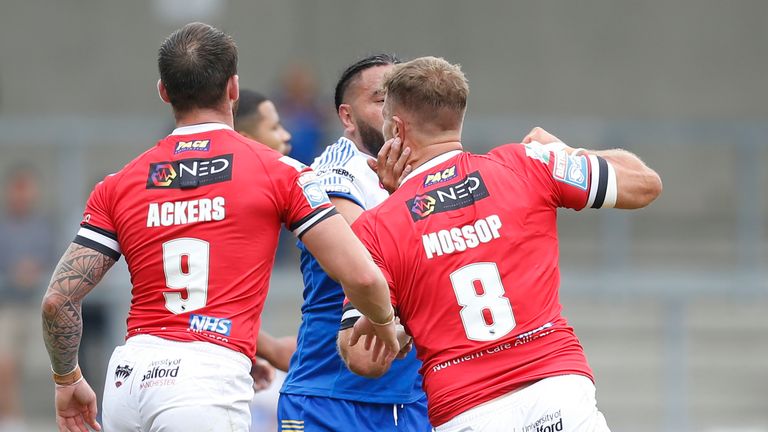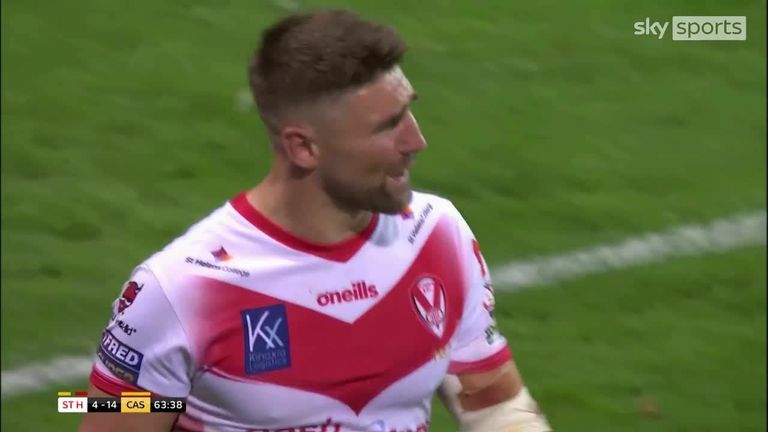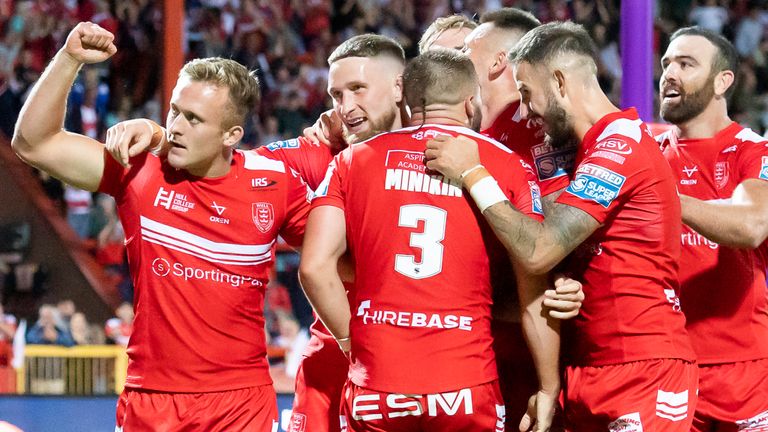Terry O’Connor looks at how physicality is being marshalled in Super League ahead of Rivals Round
It’s Rivals Round this week – and like so many, I can’t wait. Derby games bring out the beastly and the beautiful in our sport; best because fierce neighbours both contribute to a fantastic spectacle, but worst when passions spill over – and players lose control.
Looking back at derbies down the years, the build-up in the weeks leading up to these epic games was more often than not about individual battles – my mate Barrie McDermott up against Stuart Fielden for Leeds against Bradford, for example, or Andy Farrell and Paul Sculthorpe going head-to-head for a Great Britain jersey as Wigan took on Saints.
Those fierce rivalries and battles are what we sold the game on and still the clips everyone wants to see. The roar of the crowd would tell you that those rivalries often boiled over – look up the footage on any search engine to see that.
Speaking to current players, ex-players and diehard fans, I’m worried that they’re all saying the same thing – the game is going soft. I don’t think it is – and neither are any of our players. The issue is what’s being penalised, and what’s not.
I’m not saying “bring back the biff” – those days are obviously gone.
We live in a world of litigation and that terrifies the sporting world and society in general. What I don’t like now is seeing 26 players come running in having a push off knowing they’re not going to get hit.
I was chatting to St Helens great Tommy Martyn, who knows a bit about derbies, at the weekend and he said that he wouldn’t have dreamt of going in to a coming together and start pushing a big forward like Kelvin Skerrett or Neil Cowie because he knew what he would get.
At the same time, players are currently getting sent off for glancing shots that don’t even hurt their opponents, or getting banned for infringements that wouldn’t even have registered twenty years ago.
If you go to the root of the problem, I don’t believe it’s the referees or the disciplinary panel but rather the laws of the game, and changes in their interpretation, over the years.
And as for players feigning injury, staying on the floor… my childhood hero, Steve O’Neill, said to me at the weekend that years ago you would try to get up even if you had a broken leg, in order to show the opposition that you weren’t hurt. He said if one of his team-mates stayed down pretending to be hurt, he would go across and give him a clip around the ear!
Don’t get me wrong – player welfare is paramount. You can’t make shoulder contact direct to the head of an attacking player – it was a sending off offence years ago and it still is now.
When a ball carrying player is attacking the line or kicks and is hit late, it’s a red card and rightly so. But we’ve got to find a way to protect players while retaining the physicality that makes our sport so exciting for sponsors and fans, and can attract the next generation of supporters. Rugby League, played within the rules, is a combat sport. End of.
When I stood on the terraces years ago watching the Widnes side of Kurt Sorensen, Joe Grima, the O’Neills and the Hulme brothers, it was like watching legalised thuggery – particularly in derbies against Warrington. Those battles didn’t deter me as a youngster from playing – so in today’s more sanitised version, will kids be put off by what they’re watching on the pitch? I don’t think so.
We should promote the game by talking up its physicality, and the incredible skills of our athletes – not endlessly talking about who got sent off and why. Take last weekend’s games – my lasting memory will be George King’s tip on for Matty Storton, helping Hull KR set the field position for back-to-back tries. That’s what I want to see.
Every week during these tough times, teams are constantly losing players due to COVID – or to suspensions that many fans find harsh.
Like most supporters, I marvel at what our players put themselves through, week in week out – fingers crossed clubs can get through to the end of the season without the pressure on their players becoming too much, in their struggle to field a side.
Moving forward, I suppose my two questions are: how do we want the game to be played? And how do we want it to look?
Source: Read Full Article




